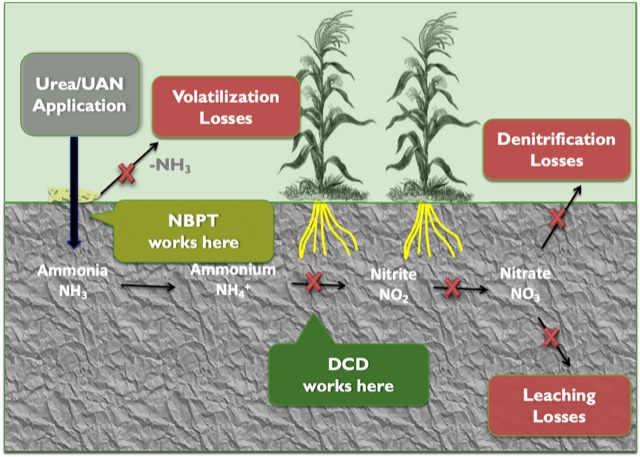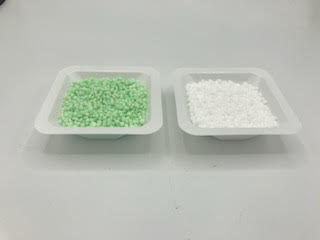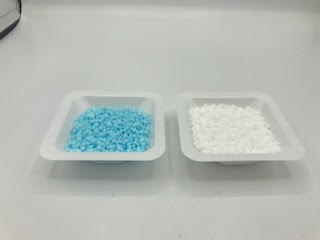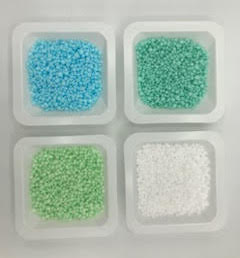Info | Nitrogen Stabilizers
Nitrogen fertilizer can be added to the soil in a variety of forms including, Urea, NH3, NH4, NO3, and organic molecules that contain nitrogen atoms.
Once your fertilizer has been applied, it becomes a part of the nitrogen cycle.
The nitrogen cycle is the cycle of processes in which nitrogen changes forms in the environment.
The nitrogen cycle include three paths through which Nitrogen can be lost: volatilization, denitrification, and leaching.
Nitrogen stabilizers help to manage the processes within the nitrogen cycle to maximize nutrient use efficiency.
Volatilization and N-Butyl thiphosphorictriamide (NBPT)
When urea is applied as a fertilizer, it is broken down by urease enzymes that are naturally occurring in the soil.
If the urea is on the soil surface when it is broken down by the enzyme, NH3 gas is released into the atmosphere, and the Nitrogen within that NH3 is lost.
NBPT is a urease inhibitor, which blocks urease enzyme activity giving the urea time to move into the soil, where it is trapped as NH4 and less likely to be lost to the atmosphere.
Denitrification, Leaching and Dicyandiamide (DCD)
Once NH4 is in the soil it is the target of bacteria that transform NH4 into NO3 in a process called Nitrification.
Once the nitrogen is in the form of NO3, it can be lost via denitrification and leaching.
The denitrification process is one by which another type of bacteria converts NO3 into a gas that is released from the soil into the atmosphere.
Leaching is the process where NO3 moves with water down through the soil and outside the root zone.
DCD is a nitrification inhibitor, which blocks the activity of the nitrifying bacteria keeping fertilizer in the NH4 form for longer.
While in the NH4 form, the N will not move through the soil, preventing leaching.
Similarly, the denitrifying bacteria cannot transform NH4 directly into a gas, reducing risk of denitrification losses.

Nitrogen Stabilizers and 4R best practices
Nitrogen stabilizers are already a recognized part of the 4R nutrient stewardship framework.
The 4 R's are Right Source, Right Rate, Right Time, and Right Place.
Stabilizers can help in a variety of ways within this framework by allowing more flexibility on the source of N and application rate, increasing the length of time that your applied N is available for crops, and by keeping Nitrogen in the right place by reducing the ability to move outside of the root zone via volatility, denitrification, and leaching.
Images

N-Forced NBPT 50
CFIA #2021997A
CFIA #2021997A

N-Forced Plus
CFIA #2021911A
CFIA #2021911A

Top Left: N-Forced plus
Top Right: N-Forced Plus + N-Forced 50
Bottom Left: N-Forced NBPT 50
Bottom Right: Untreated
Top Right: N-Forced Plus + N-Forced 50
Bottom Left: N-Forced NBPT 50
Bottom Right: Untreated
